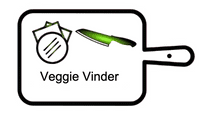What Does Pomegranate Taste Like? Does Pomegranate Taste Good?
Pomegranates are rich in antioxidants, fiber, vitamins, minerals, and other nutrients.
They also contain a unique compound called punicalagins, which has anti-inflammatory properties.
Pomegranates are native to Asia and Africa.
The fruit was introduced to Europe during the Middle Ages.
Today, pomegranates are grown around the globe, especially in California, Israel, Turkey, Chile, Spain, Italy, Morocco, Greece, and Iran.
Pomegranates have long been associated with health benefits.
In fact, they are often considered a superfood because of their high nutrient density.
This means that they provide a large amount of nutrition per calorie
What is Pomegranate?
Pomegranates are a fruit that grows on trees. It is native to Asia but now grown worldwide. Its name comes from the Greek word “pomme” meaning apple and “granatum” meaning granulated. How to Eat Pomegranate Seeds 1. Cut the top off the pomegranate. 2. Remove the white membrane around the seeds. 3. Scoop out the seeds into a bowl. 4. Add sugar if desired. 5. Enjoy!

What Does Pomegranate Taste Like? Does Pomegranate Taste Good?
Pomegranate tastes sweet and sour. It has a tart taste similar to cranberries. Pomegranate juice is available in stores.
How to Cook/Use Pomegranates in Recipes?
Pomegranate seeds are used in salads, desserts, and drinks. They are also added to breads, pastries, and other baked goods. Pomegranate seeds are rich in antioxidants, fiber, and vitamin C.
Final Thought
Cooking is not only about how well you know your way around the kitchen. It’s also about how well you understand what you’re doing. And if you’re looking to get better at cooking, then you’ll definitely benefit from reading these answers to common cooking questions! If you have any questions, please feel free to ask below. I’d love to hear from you!
What part of a pomegranate is poisonous?
Pomegranates are known for their sweet taste and juicy texture. However, there are parts of the fruit that cannot be eaten. These include the white membrane surrounding the seeds and the bitter skin. To get rid of these unwanted parts, cut the pomegranate into quarters and place the pieces in a bowl of cold water. After about 10 minutes, drain the pomegranate and discard the bitter skin. Then, slice the pomegranate quarters into halves and scoop out the seeds using a spoon.
Can pomegranates be toxic?
Pomegranate seeds are delicious and nutritious. They are full of fiber, vitamin C, potassium, folate, iron, magnesium, copper, manganese, phosphorus, zinc, selenium, and antioxidants. Eating pomegranate seeds is easy, simply remove the arils from the shell and enjoy.
Can pomegranate seeds be toxic?
Pomegranates are not poisonous but they can cause stomach upset if eaten raw. It is recommended to wash them thoroughly before eating. How to peel a pomegranate 1 Cut the top off the pomgranate and gently squeeze out the juice into a bowl 2 Carefully pull back the skin and take out the arils 3 Wash the fruit under running water 4 Dry the fruit 5 Enjoy!
What is the best way to eat pomegranate?
To remove the arils from the pomegranate, cut the top off the pomegranate and gently squeeze the juice into a bowl. Then carefully pull back the skin and remove the arils. What is the difference between pomegranate and apple? Answer: Pomegranates are round fruits with many seeds. Apples are oval shaped fruits with a hard outer shell and soft inner flesh.
What part of pomegranate do you eat?
Pomegranate seeds are usually eaten after removing the arils from the fruit. Arils are the edible seed sacs found inside the pomegranate.
What part of the pomegranate can you not eat?
Pomegranates are not only delicious but also nutritious. Pomegranates are rich in antioxidants, fiber, vitamin C, potassium, folate, iron, magnesium, manganese, copper, zinc, and selenium. These nutrients help prevent heart disease, diabetes, and certain types of cancer. However, eating too many pomegranate seeds can increase the risk of developing kidney stones.
How do you properly eat a pomegranate?
Consuming too many pomegranates can lead to diarrhea, nausea, vomiting, abdominal pain, and even kidney stones. Eating too many pomegranated seeds can also increase the risk of developing cancer.
What are the cons of pomegranate?
Pomegranates are rich in antioxidants and fiber. Pomegranate juice is very popular because of its health benefits. It contains many nutrients such as vitamin C, potassium, folate, iron, magnesium, copper, manganese, phosphorus, niacin, riboflavin, thiamine, zinc, calcium, and selenium. Pomegranate seeds are also a good source of protein, dietary fiber, and minerals. However, if you eat too many pomegranate seeds, you may experience stomach upset. This is because pomegranate seeds are acidic and can irritate the digestive tract. Therefore, it is recommended to consume only 1/4 cup of pomegranate seeds per day.
